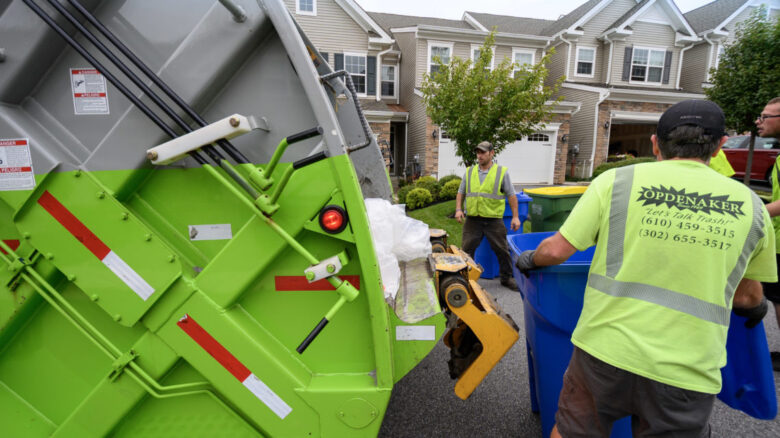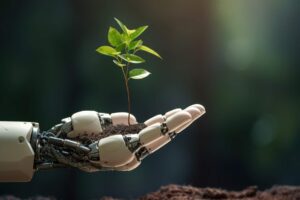The global waste crisis is a current emergency affecting every region of the planet, not a future problem. Landfills are overflowing, oceans are becoming clogged with trash, and the amount of hazardous technological waste is increasing. Well over 2 billion tons of solid waste are produced annually. The impact on our health, environment, and climate is enormous. Fortunately, technology gives us hope. Green technology, a combination of invention and sustainability, is emerging as a powerful weapon in the fight against waste.
From smart recycling systems to biodegradable packaging, technology is improving waste management on all fronts. More and more governments, businesses, and citizens are starting to embrace green solutions. Sustainable waste management technologies are no longer an extra: as the world population grows and consumption increases, they have become a necessity. In this article, we explore how green technology can proactively address this growing problem and transform our approach to waste management.
Smart Waste Collection System:
Traditional waste collection techniques are often inefficient, leading to overflowing bins, wasted fuel, and excessive carbon emissions. Smart bins and IoT-based waste management systems are changing this process for green tech companies. By using sensors to track bin levels and send real-time data to waste collectors, these systems can optimize collection routes and reduce fuel consumption. Cities like Seoul, Barcelona, and San Francisco have already implemented such systems to clean up streets and reduce operational expenses. This technology-driven strategy ensures that waste is only collected when it is needed, improving overall efficiency and reducing unnecessary trips.
Automating Recycling with Artificial Intelligence:
Sorting recyclables has long been a labor-intensive and error-prone process. Thanks to the development of robotics and artificial intelligence, recycling plants can now automate the process. Robots with artificial intelligence can find, sort, and separate different types of waste with astonishing speed and accuracy. This increases recycling rates and reduces pollution, a major problem with traditional recycling. By continuously developing these systems, machine learning algorithms ensure that they can adapt to changing waste sources. The result is a more economical and efficient recycling system that minimizes reliance on landfills and maximizes material recovery.
Innovations in Compostable and Biodegradable:
One of the biggest contributors to the global waste problem is plastic pollution. Using green technology to create biodegradable and compostable alternatives to traditional plastics can solve this problem. These natural, eco-friendly materials break down in the environment without causing negative impacts. Innovations include compostable cutlery, seaweed-based packaging, and bioplastics made from cornstarch. To transition to more sustainable product life cycles, companies are beginning to incorporate these alternatives into their supply chains. While scalability and cost issues remain, continued research could make these solutions more widely available.
Waste-to-Energy Technology:
Landfills not only take up valuable space, but they also emit greenhouse gases such as methane. Waste-to-energy (WTE) technology converts non-recyclable waste into usable energy through incineration, gasification, and anaerobic digestion. By significantly reducing the amount of waste that ends up in landfills, these systems can provide fuel, heat, or electricity. Despite concerns about air pollution, modern WTE plants incorporate filters and emission controls to mitigate their environmental impact. Countries like Sweden and Japan have effectively adopted WTE as a basis for their waste management policies, demonstrating its potential as a sustainable energy source.
E-Waste Recycling and Circular Electronics:
Due to rapid technological developments and the increasingly short lifespan of electronic products, e-waste has become the fastest-growing type of waste in the world. Green technology is also making progress here, with projects focusing on the responsible recycling of e-waste and the development of circular electronic products. To reduce the need for environmentally unfriendly mining, startups are creating ways to safely extract precious metals like gold, lithium, and cobalt from discarded equipment. At the same time, companies are developing equipment that is easier to repair, upgrade, and recycle. This shift not only reduces waste but also helps consumers view the items as long-term investments rather than disposable items.
Sustainable Solutions for Construction Waste:
The construction industry produces millions of tons of waste each year and is a major source of waste worldwide. Innovative building materials and modular construction techniques are enabling green technology to solve this problem. The company has started using fly ash, recycled plastics, and even mushroom composites to create eco-friendly building components. The company is also 3D printing structures using recycled materials. These technologies offer new opportunities to recycle industrial waste and significantly reduce waste on construction sites. With the increasing number of green building certifications, sustainable buildings are becoming a new benchmark for urban development.
Digital Platform for Waste Reduction:
Digital platforms that encourage waste reduction among consumers and businesses are another important application of green technology. Today, software tools and apps provide users with insights into upcycling and recycling opportunities, sharing items, and tracking food waste. For example, some apps help people reduce food waste in their household by donating leftover food to a local shelter or by monitoring the food’s expiration date. Companies are applying AI solutions to reduce surplus and associated waste by predicting inventory needs more accurately. With these digital tools, people can support the circular economy and make sustainable decisions in their daily lives.
Conclusion:
One of the biggest challenges to the environment and human health today is the global waste problem. At the same time, the development of green technology has also provided a spark of optimism. From biodegradable packaging to smart recycling robots, green technology is changing the way we generate, manage, and dispose of waste. Cities, businesses, and people are adopting these inventions as they grow, creating a collective movement towards sustainable development.
The combination of environmental awareness and technology is becoming increasingly powerful. To solve the waste problem once and for all, more investment, awareness, and global cooperation are needed. The future depends on scalable, technology-driven solutions that not only minimize waste but also convert it into a usable resource. Embracing green technology does not just solve a problem; it helps us create a more sustainable world for future generations.
FAQs:
1. What is green technology in waste management?
Green technologies are inventions that are beneficial for the environment and are designed to reduce waste and pollution. Waste management includes smart bins, automated recycling systems, biodegradable materials, and waste-to-energy technologies.
2. How can artificial intelligence support recycling?
AI helps with recycling by automating the sorting process, reducing contamination, and increasing the efficiency of material recovery. AI algorithms can distinguish between different types of waste better than humans.
3. What are some biodegradable alternatives to plastic?
Biodegradable alternatives include biodegradable packaging, mushroom-based foam, seaweed-based packaging, and bioplastics made from cornstarch. These materials decompose organically without leaving behind harmful residues.
4. Does waste generate energy?
Yes, waste-to-energy technologies such as incineration, gasification, and anaerobic digestion can convert non-recyclable waste into electricity, heat, or biofuels. This can reduce landfill and emissions.
5. What is e-waste, and why is it a problem?
Electronic waste includes discarded batteries, laptops, mobile phones, and other electrical equipment. The waste of toxic ingredients and valuable resources is a concern. Green technology promotes the recycling of electronics and safe recycling to reduce electronic waste.




